Opening hours at the museum
The Greenland National Museum has varying opening hours.
Winter (15th September - 15th April)
Opening Hours:
Monday to Sunday: 12:00 - 16:00
Admission:
Adults: 100 DKK
Students & children: Free
Summer (15th April - 15th September)
Opening Hours:
Monday to Sunday: 10:00 - 16:00
Admission:
Adults: 100 DKK
Students & children: Free
Free Admission on Last Monday of the Month
Special Closed Dates:
24th, 25th, and 26th December; 31st December; 1st January
The following Mondays offer free admission for all:
January 26, 2026
February 23, 2026
March 30, 2026
April 27, 2026
May 26, 2026
June 21, 2026 (Greenland's National Day)
June 29, 2026
July 27, 2026
August 31, 2026
September 28, 2026
October 26, 2026
November 30, 2026
December 28, 2026
Welcome to Nunatta Katersugaasivia Allagaateqarfialu - Greenland National Museum and Archives.
Here you can read more about the museum’s collections and exhibitions, as well as Greenland’s intangible cultural heritage. The archive's digitalised Church ledgers are found here.
Use the menu above or the search function to find what you're looking for and if you need further assistance, please reach out to the NKA staff.
NEWS:
Special Exhibition
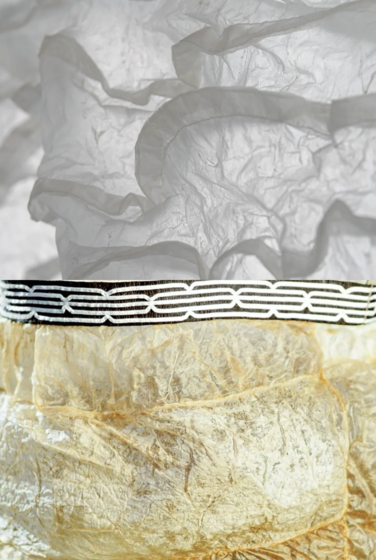
Puggut anernerat – Breathing Membranes
The opening of the special exhibition at the National Museum will take place on Friday, October 3, 2025, from 3 to 5 PM.
Our ancestors sewed objects made from animal intestines, Gut-Skin. Inspired by the museum’s preserved collections, new artworks and crafts have been created, which can now be seen in the exhibition running until February 22.
The exhibition was created in collaboration with seamstress Sofie Amondsen and textile artist Julie Bach.
Here you can find a guide on working with Gut-Skin:
Inge receives cultural heritage award
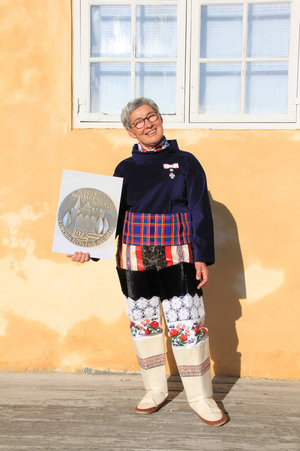
Museum Curator Inge Bisgaard has been awarded the European Heritage Award / Europa Nostra Award 2025!
This major award, granted by the European Commission and Europa Nostra, is a testament to her decades-long dedication to preserving Greenland's unique architectural heritage.
To mark the occasion, a ceremony was held on September 26 at Hans Egede’s House in Nuuk, where the bronze plaque was unveiled. The plaque will later be installed at Nunatta Katersugaasivia.
Family, colleagues, and members of the cultural community joined to celebrate Inge’s incredible work.
Over 16,500 people from around the world have visited the museum from May through the end of August this year!
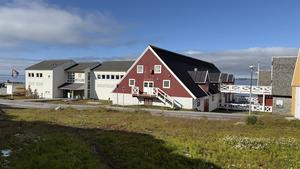
Every year Summer is always our busiest period. The number of both child and adult visitors increases every year. And it is not only tourists who visit the museum - local people, such as students from various schools, education programs and other institutions visit the museum all year round.
According to our records last year in 2024, 19,391 people visited the museum and we can already tell that we have beaten that number (in 2025).
The museum is open Monday to Sunday, 10 am – 4 pm.
(Winter opening hours begin on the 15th of September - Monday to Sunday, 12 pm - 4 pm)
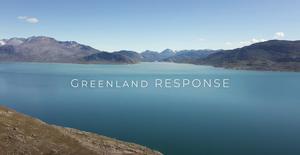
Greenland RESPONSE
A short film exploring the archaeologies of climate change in UNESCO Kujataa.
https://youtu.be/KRCBNaw0MtA?si=9IUptzW3p90FtUNa
Archaeological sites across the circumpolar north are rapidly degrading as a consequence of rising global temperatures. This short film shares the story of the Greenland RESPONSE project and the archaeologists racing to record and rescue what is left. Focussing on the sub-arctic farming landscape of Kujataa, south Greenland, the film documents the excavations of Norse (Viking) farming settlements dating between the 10th-14th centuries, while exploring the very tangible connections to present-day Inuit farming communities working the same soil.
The film is a mixture of English and Kalaallisut. The project was funded by the National Science Foundation with support from the Greenland National Museum, UNESCO Bridges, NABO and the University of Iceland.
Soil Investigations at Sermermiut, 15-19 July, 2024
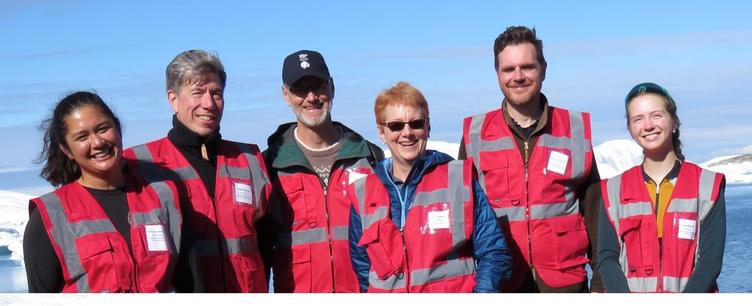
Ilulissat is hosting staff members from Nunatta Katersugaasivia Allagaateqarfialu, NKA, as well as two experts from Alaska who have special knowledge about soil and erosion.
Site Manager Bo Albrechtsen: “At Sermermiut, we are particularly interested in understanding how we can expect the erosion to develop in the coming years. On top of the plain lies a series of winter houses from the 17th-18th centuries, and beneath them, there are likely remains from both the Dorset and Saqqaq cultures. Overall, the plain holds around 4,000 years of cultural history. Therefore, we are interested in understanding how climate change will affect the area through erosion and the landslides of soil, peat, and cultural elements”.
One of the important factors contributing to the stabilization of the area is permafrost. The investigations therefore include mapping the extent of the permafrost: At what depth do we find it, how does vegetation affect the permafrost, how does the permafrost develop over a whole year, and several other questions.
The municipality's World Heritage Office, NKA, and the U.S. Department of the Interior are collaborating on the project.
In the picture from left to right: Christina Bonsell (Marine Ecologist), Mikkel Myrup (Museum Curator), Bo Albrechtsen (UNESCO Site Manager), Claire Shields (U.S. Department of the Interior), Hans Harmsen (National Heritage Resources Manager), and Claire Benton (Soil Scientist).
Special exhibition
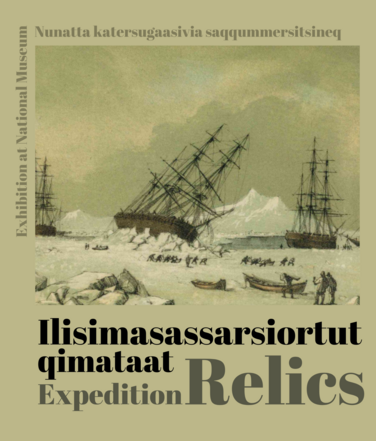
Expedition Relics
For over a century, there was a great interest in organizing expeditions to Greenland. Several episodes mark history, many ending in tragedy and failure. The evidence of these expeditions along Avannaarsua is reflected in the objects left behind by 19 expeditions carried out between 1853 and 1934. Relics are exhibited.
Visit the exhibition and learn about the relics. The exhibition will be available from April 6th until August 18th, 2024, at the museum.
Digitized exhibition
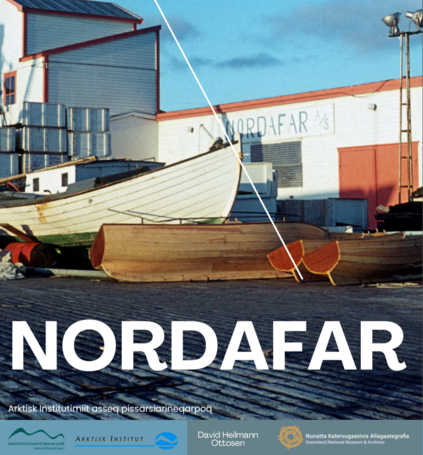
NORDAFAR
NORDAFAR, a historical fishing port in West Greenland. NORDAFAR was established in 1953 and closed in 1985. The port welcomed fishermen from Norway, the Faroe Islands, Denmark, Greenland, as well as ships from European countries. NORDAFAR has been a place full of with life - you have now the opportunity to step into an exhibition that offers a glimpse of everything that made NORDAFAR a unique place, told through the lens of four selected buildings.
Visit the digitized exhibition and learn about the port through abandoned buildings.
Qassiarsuk Tapestry Tour
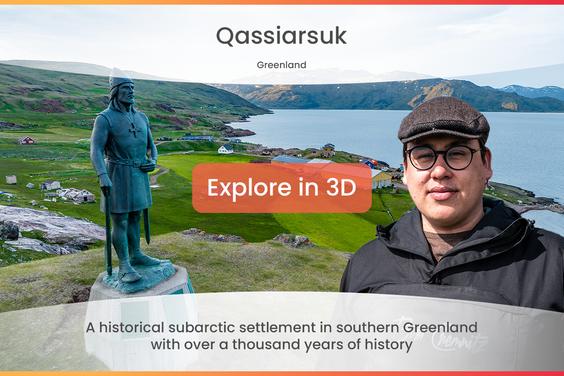
Take a virtual tour of Qassiarsuk, a subarctic settlement in Southern Greenland with a rich history spanning a thousand years! Join us as we explore this UNESCO World Heritage Site, known for its sub-arctic farming landscape.
The tour unveils Qassiarsuk's ancient history, showcasing the enduring connections between Norse settlers and today's Inuit communities. You’ll hear from local guides Aqqaluaq-Ole Frederiksen and Tupaarnaq Egede and local farmer Frederik Egede, whose families have cultivated this land for generations.
This project was a joint effort between CyArk, Kujataa World Heritage, and Greenland National Museum and Archives, and it was made possible with the generous support of Iron Mountain.
Memorial
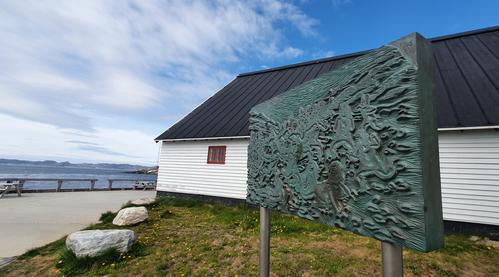
You can once again see the memorial for one of Greenland's most important and most recognized artists, Aron from Kangeq.
The memorial, which was made by Christian “Nuunu” Rosing, was shown for the first time in 1993 and on the 200th anniversary of Aaron's birth, it is now again to be found outside the museum.
Digitized exhibition "GREENLAND 1721-2021 A COLONY. A NATION. A PEOPLE."
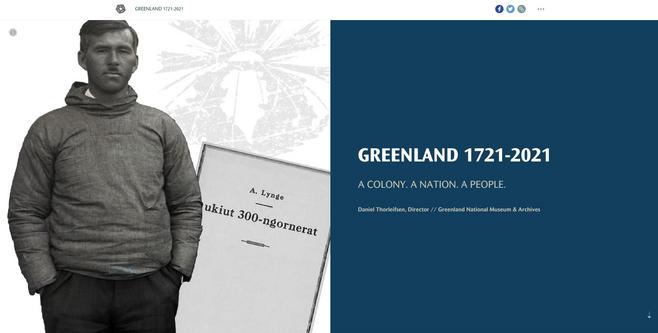
The new special exhibition "GREENLAND 1721-2021 A COLONY. A NATION. A PEOPLE." can now be experienced in a virtual exhibition.
Click here to see.
The Museum
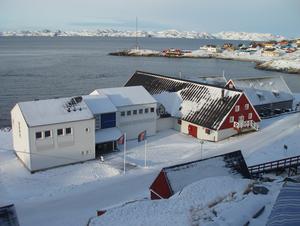
The museum was started in mid-1960s as the first museum in Greenland. The collections have ever since expanded the collections, from excavations and with repatriated material from the Danish National Museum. The museum works with archaeology, recent history, arts and crafts. The museum houses the central registers of listed buildings and monuments and undertakes conservation provisions of the law on protection of monuments and buildings, as well as participating in nature conservancy and urban planning.
The museum advises the Greenlandic government in all affairs regarding permission for excavation of ancient monuments. All excavated material belongs to Greenland.
The Archive
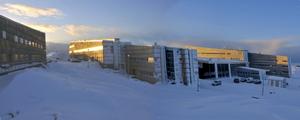
The archive is primarily tasked with ensuring the preservation of archival material and is furthermore responsible for the collection, organization, preservation, registration, research and dissemination of Greenland's cultural and social historical development.
The first law on archives was passed on the 1st November 1982 and on January 1st 1991 the Museum and the National Archives, which previously had been two separate institutions, were merged under the name Greenland National Museum and Archives.
The institution receives records from all public institutions in Greenland as well as from private donators. The archive is available for enquiries concerning records on- or from Greenland.
